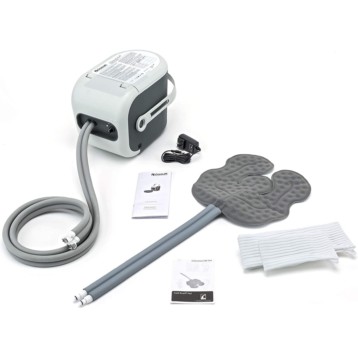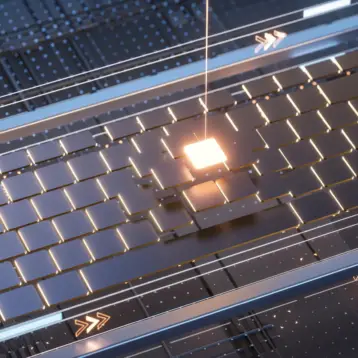|
Introduced as a prototype in 2002, the first graphic display technology conveys scanned illustrations, map outlines or other graphical images to the user’s fingertips, and can translate images displayed on Internet Web pages or in electronic books. It uses refreshable tactile graphic display technology, allowing a person to feel a succession of images on a reusable surface.
The display uses about 3,600 small pins – known as actuator points – that can be raised in any pattern, and then locked into place for reading. The actuator points can then be withdrawn and reset in a new pattern, allowing the user to “see” a variety of images. Each image is sent electronically to the device, which uses special software to determine how to create a tactile display that matches the image.
|
The more recent technology – a tactile graphic display for localized sensory stimulation – uses an array of about 100 small, very closely spaced actuator points set against the user’s fingertip. To “view” a computer image, the user moves the device-tipped finger across a surface (much like a computer mouse) to scan an image from the computer’s memory. The computer sends a signal to the display device and moves the actuators against the skin to “translate” the pattern, replicating the sensation of the finger moving over the pattern being displayed. The technology could possibly be used to make fingertip tactile graphics practical for virtual reality systems or give a detailed sense of touch to robotic control (teleoperation) and space suit gloves.
Earlier this year, TFOT published an article covering groundbreaking research on embryonic stem cells that may lead to a new technique for curing blindness in humans.
To read more about these tactile graphic displays, see the NIST website.












